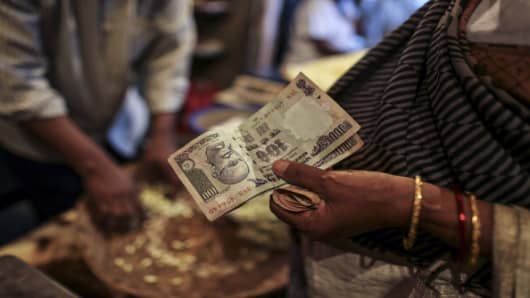India's defense of its currency is showing signs of working as the central bank pays the highest yields for short-term debt in years, although its resolve faces a bigger test on Friday, at a sale of longer-dated bonds.
The rupee rose for a second session on Thursday after the Reserve Bank of India agreed to pay double-digit yields to sell 52 billion rupees ($880.01 million) in one- and two-month debt, in its second sale of short-term debt in as many days.
Although the RBI fell short of its plan to sell 60 billion rupees of debt, investors saw the willingness to pay such high yields as an important sign of resolve after it last week rejected all bids in a treasury auction and then sold just over a fifth of longer-dated debt at a separate sale.
(Read more: India's Current Account Good News May Be Fleeting)
A more significant test of the RBI's rupee defense will come on Friday when it is due to sell 150 billion rupees in government bonds, after its surprise strategy to shore up the rupee by draining cash was unveiled two weeks ago and was followed up with more tightening measures on Tuesday.
Willingness to sell debt at higher yields will be essential if investors are to buy into the central bank's plans after debt yields have shot up as a result of the RBI's measures.




